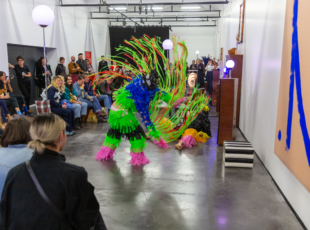Lia Giraud, microalgae but high (photo)sensitivity
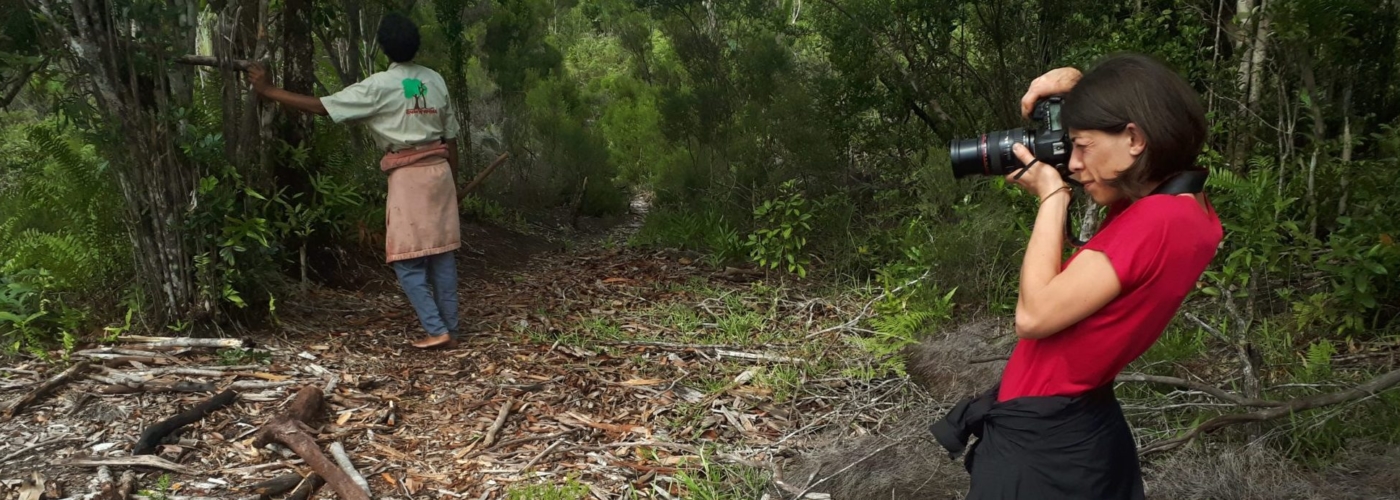
Article author :
A science-curious artist, Lia Giraud was brought up on documentary images before developing a very algal photographic process. Her process/works question our relationship with living things, with the image and with technologies.
Arts or sciences? As a high-school student, Lia Giraud hesitated for a long time. But today she has no problem in stating: ‘I am categorically an artist. I am delighted to have found an intermediate space between these two worlds, too often considered poles apart. For that matter, it is what I always remind my students: “It is you who write your frame.” A teacher of photography at the Marseille Beaux-Arts, the artist researcher attended the École nationale supérieure des Arts Décoratifs de Paris, where she studied photo and video. In 2012, she embarked on doctoral studies at the Université Paris Sciences et Lettres. ‘I had the opportunity to take part in a Sciences Arts Création Recherche (SACRe) doctorate, one of the first in France to interweave arts and sciences.’
Influenced by anthropology, the social sciences and philosophy, in particular by the thinker George Simondon, who brings together culture and technology, it was a hard science that particularly inspired the artist: biology. ‘Images are like living beings but despite everything remain inanimate objects which, in our minds only, come to life,’ she recently wrote in PALM, the magazine published by the Paris arts centre, Jeu de Paume. To bring her images to life, she looks to unicellular beings, and more specifically, to microalgae.

With algægraphy, I try to lead the algae elsewhere, to highlight their ability to tell us about the world.
Lia Giraud
In a dialogue with living things which has done away with the dichotomy between nature and culture, in 2010 Lia Giraud – still a Decorative Arts student at the time – came up with a technique which has run through her work up until the present day and which she has named algægraphy. A transposition of the silver print to an organic milieu, this technique is based on the phototaxis and photosynthesis of microalgae. If we have a better understanding of the photosynthesis which allows algae to multiply thanks to light energy, phototaxis for its part is the ability of algae to move in response to light..
In an apparatus of cultures, equivalent to the camera obscura, a negative image is projected onto the surface of a Petri dish containing microalgae, a small round dish filled with a reddish liquid which fosters the development of microorganisms and which were used in science courses. The organisms cultivated by Lia continuously track the better light conditions and move into areas of light conducive to their development. They thus accentuate the different densities of the photograph being developed. The result: ephemeral photographs which disrupt the definition of the fixed image because, when placed in an exhibition, these well-known Petri dishes are arranged on luminous tables. The organisms which inhabit them continue to evolve when faced with the conditions of the exhibition sites, sometimes hostile to algae. As the days go by, the public witnesses the different stages of degradation of the images.
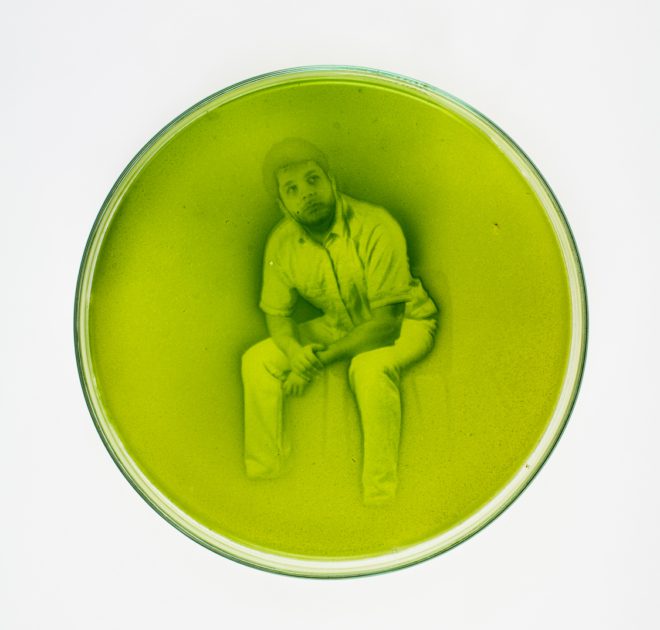
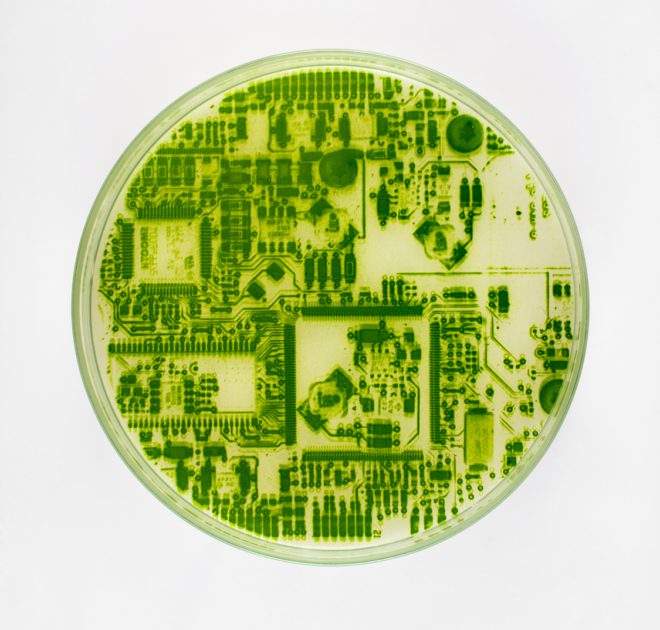
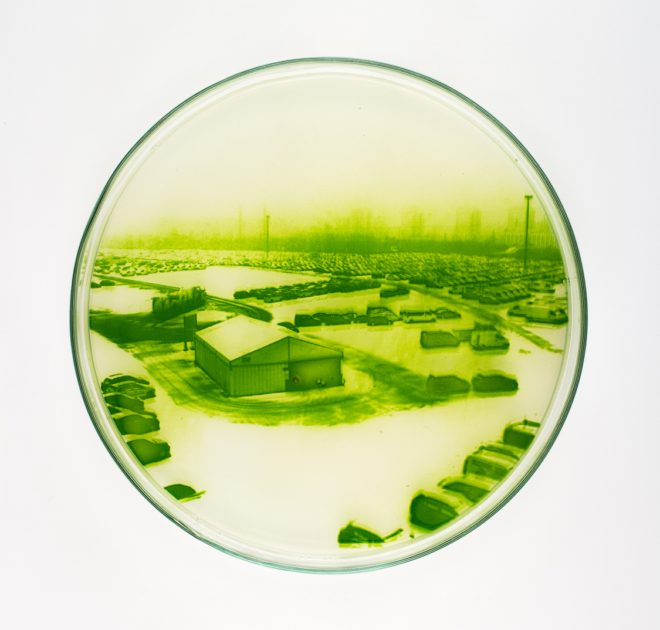
Questioning the impermanence of the image
The medium is appropriate to call to mind the characteristics of a living being one doesn’t see or sees little of. ‘It is true that the living beings I work with are rarely considered by society. Microalgae, to be precise, are most of the time used for production purposes, in pharmacopoeia, energy, nutrition as well. With algægraphy, I try to take the algae elsewhere, to highlight their ability to tell us about the world. They thereby escape their vegetable state and become animated, animal.’
The challenge of my work is to show my artworks whilst they are creating themselves.
Lia Giraud
As a doctoral student, dissatisfied with the concept of the fixed image, Lia Giraud has explored a thought which had already been germinating since the beginning of her artistic journey concerning the permanence of the photographic medium. She started to get to grips with the concept of the image process, an idea which postulates that artworks are never really settled. ‘The challenge of my work is to show my artworks whilst they are creating themselves. The involvement of the living world in my productions is a way of giving prominence to the processual questions in that. Life is always an external process which unfolds before our eyes, but when you take it out of the soil, you then have to equip it with technical apparatus.’
Photos which stabilise, then transform themselves, deteriorate and disappear. A process at once poetic and tragic. Is the artist-researcher looking to illustrate our relationship with living things? ‘Of course, but it’s also a process which allows me to look into our relationships with image objects. That is particularly evident in my Photosynthèse project.’ One of the artist’s most recent installations, which we were for that matter able to view a few months ago in the Pavilion, in Namur, as part of the exhibition, Biotopia: Cohabiter avec le vivant.

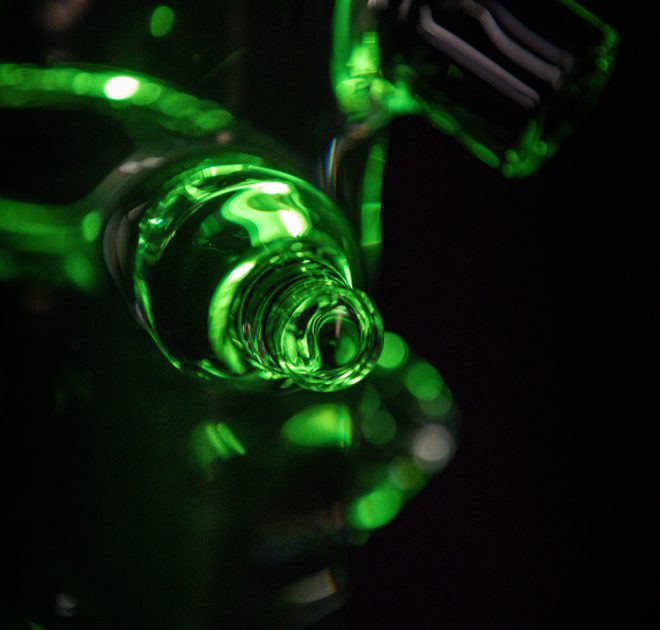
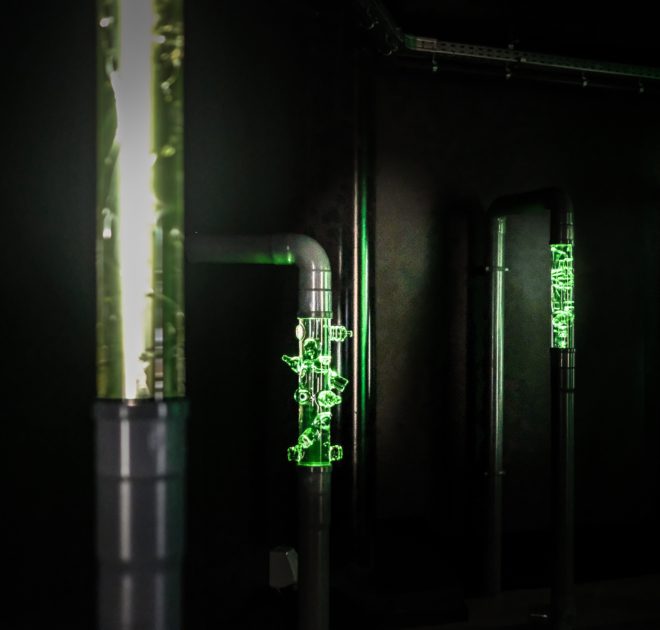
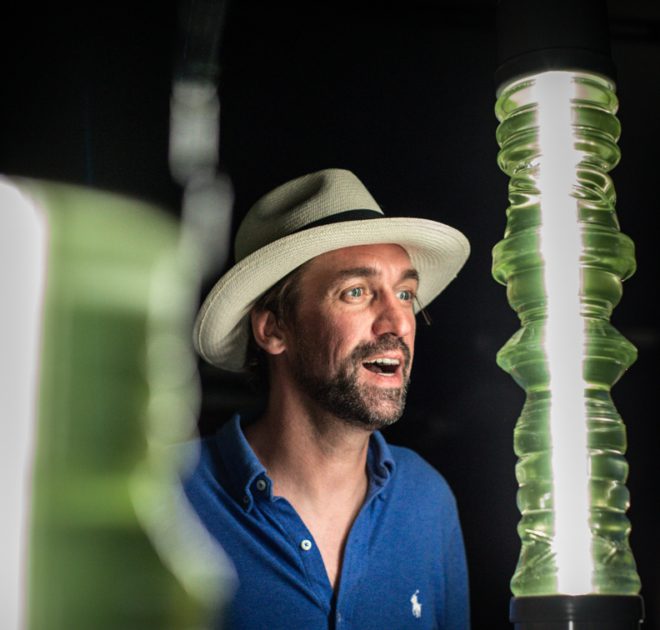
Presented as a “photographic inventory of the invisible”, Photosynthèse focuses on the thousands of objects fished out of the port of Marseille between 2016 and 2020 by the MerTerre association. Here again the algægraphic process shows, through a film this time, the bottles, electric scooters and thousands of other waste items made invisible because submerged by the sea. The voices of Isabelle Poitou, the founder of the MerTerre association, and the sociologist Baptiste Monsaingeon analyse the human-waste relationship, and guide us through this sea of detritus. ‘To make the film, I developed my algægraphs on the basis of images taken from the internet. Genuine web waste products because these photos are produced non-stop and are made invisible behind the surface of a screen.’
From gardener’s syndrome to the culture of care
‘Claude Yéprémian, a biologist who works at the Natural History Museum and whom I have been working with for a long time, has a nice saying: “In the cultivation work with living things, biologists suffer from gardener’s syndrome”.’ Because to create these algægraphs, you do have to produce microalgae, cultivate them, feed them, day after day. ‘There really is something of the order of care about the whole thing. And this syndrome stays with us as far as the exhibition site. You need to make the managers of the exhibition mindful of the need to observe the behaviour of the algae to ensure their development. This passing on is very interesting and it also involves the public, who often ask me about the wellbeing of these little algae.’
In placing these organisms in territories chosen by the human being, Lia for that matter has to consider ethical questions. ‘Whilst I don’t do genetic modification, my work is based on living beings become mediums, transformed to respond in a functional way to human desire. That involves cultivating living organisms in large numbers, removing them from their habitual living space. I endeavour to give back these microalgae their place as a living entity, in other words, embedded in a system or a technology which I do not control. That said, working with a living matter also means opening yourself up to a form of non-control.’ And by means of her algægraphic handiwork, the artist sketches a kind of ecology of the oeuvre to allow us to reconsider our relationship with all forms of the living world.
A story, projects or an idea to share?
Suggest your content on kingkong.

